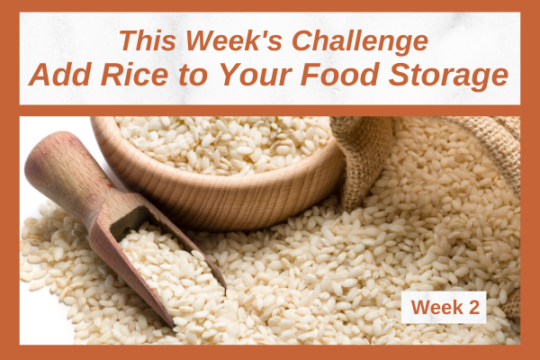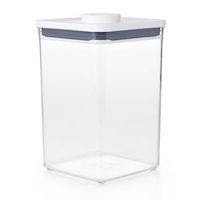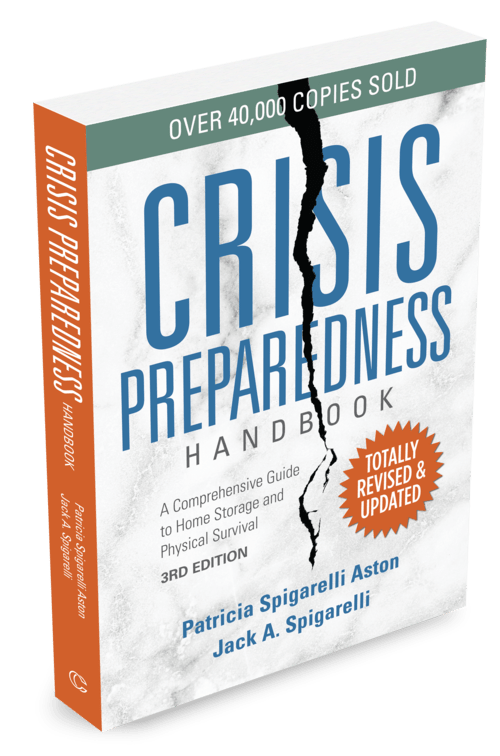Welcome to the second Crisis Preparedness blog post for 2022.
Week 2 Preparedness Challenge
This week the preparedness challenge is to add rice to your food storage.
The more I think about it, the more important I believe rice is in a preparedness plan.
Rice is one of the basic grains of the world. It is versatile and is a staple ingredient for meals in many cultures. It is economical and easy to store and use. With just water and heat, along with salt and a few spices, you can have something to eat in just a few minutes that is nourishing and tasty. Add beans, a can of meat, or fresh vegetables and you have a satisfying meal.
How Much Rice Should I Store?
A typical serving of rice is one cup, cooked. One pound of dry rice will make six cups of cooked rice. For simplicity, store five pounds of rice per person for a one-month supply.
If you want to keep it super simple, store five pounds of rice per person for a one-month supply.
You may want to adjust the amount of rice you store based on the other foods you have in your food storage, how much your family likes rice, and especially the kinds of crises you anticipate and how long they might last. Adjust the amounts for longer periods of time using this simple formula:
Number of family members x Number of months x 5 = Total pounds of rice
For example, a family of four would need twenty pounds of rice for a one-cup serving each day for a month and 240 pounds for one year.
What Kind of Rice Should I Store?
WHITE RICE
There are many varieties of rice, each with a unique place in cuisine and culture. Enriched long-grain rice is the most common in the United States and least expensive. Jasmine is a popular rice valued for its flavor and aroma and the grains’ ability to stick together. Basmati rice is another popular long grain rice often used in Indian dishes.
INSTANT RICE
Instant or parboiled rice has been steamed and then dried. It is highly processed, lacks the flavor and texture of regular white rice, and costs at least twice as much. But because it takes less time to cook, it may be useful in a crisis if you need to conserve fuel.
BROWN RICE
Brown rice is whole grain rice that contains the bran and germ and is less processed than white rice. Brown rice is higher in vitamins and minerals, oils, and fiber than white rice. However, it has a short shelf life because the oils become rancid quickly.
What is the Best Way to Store Rice?
Rice needs to be protected from moisture, heat, light, and rodents. For best protection, store rice in sealed #10 cans with an oxygen absorber. Mylar bags are another good option but are susceptible to rodents or puncture, so store them in boxes or white food storage buckets for more protection. For simplicity, rice can also be also stored in sealed storage buckets.
MY FAVORITE STORAGE CONTAINER
If you’re like me, you probably store your rice and other grains in large storage buckets in a food storage room away from your kitchen. I like to keep smaller containers in my kitchen pantry, refilling them from the large storage containers as I use the contents. My favorite storage container is the OXO 4-Quart Good Grip POP Container (pictured). The design is sleek and the lid fits tightly, and because it’s transparent you can easily see the contents. They stack two-deep on my shelves and hold all my grains and legumes.
SHELF LIFE OF WHITE RICE
What is the shelf life of white rice? Recommendations vary for how long white rice can be stored. For the longest storage life, store rice in a cool place—ideally around 40 degrees—and in sealed #10 cans or mylar bags with oxygen absorbers. Based on studies at Brigham Young University, white rice has a functional shelf life of up to thirty years if properly stored. Rice stored for thirty years may be edible, but probably not top quality. For optimum quality, aim to use rice within five years and replenish. Rice that is left in store packaging is best used within two years.
Best practice: Use and replace rice within five years.
SHELF LIFE OF BROWN RICE
Brown rice is not recommended for long-term storage, but because of its dietary benefits you may want it in your food storage. It can be stored if it is conscientiously rotated. Its optimum storage period is six to twelve months, possibly two years, in an airtight container with oxygen removed. Date containers so you know how long you have stored the rice. Consider storing small quantities in the freezer to prolong its storage life.e life.
How Much Does Rice Cost?
Rice is most economical when it is purchased in twenty- or twenty-five-pound sacks. Regular white rice is about one-third to one-half the cost of Jasmine or Basmati rice. Rice packaged in white storage buckets, mylar bags, or #10 cans is will be more expensive because of the packaging. Instant rice and brown rice are more than twice the cost of regular white rice.
Find out more about storing foods and how to preserve food for storage in Crisis Preparedness Handbook, Third Edition (2020). If you don’t already have a copy, you can find it here on my website CrisisPreparedness.com. Or, read it on Amazon in the Kindle version or hard copy version.
#emergencypreparedness #foodstorage #rice #storingrice #crisispreparednesshandbook
You may see links on this site associated to various products, services, etc. Assume any link you see on this site is an affiliate link, which means if you click on it, CrisisPreparedness.com may receive compensation.)





2 thoughts on “Tips for Adding Rice To Your Food Storage”
I keep a supply of white (with variety of kinds), about a dozen of the “Heat-n-Eat” rice that comes in microwave bags, and a whole lot (8+ -1gal jars) of instant rice as it is so easy to prepare by just adding hot water to an equal amount of rice in an insulated mug, and add in a bit of granulated bullion for flavor along with some some crumbled jerky and dried onions and tomatoes for an instant meal. Just 1 of me now, (hubby died in October), so I figure I have enough instant rice that would last me close to a year if I were eat 1/2 cup every day, and I would still have all the long grain and Jasmin rice as a backup.
I am sorry to hear about your loss. It must be hard for you right now.
Good for you on coming up with a solution for food that works for you. Simplicity is always good. Thanks for sharing your way of storing rice. I have used some of those types of packets and, you’re right, they are great.
Best,
Patricia